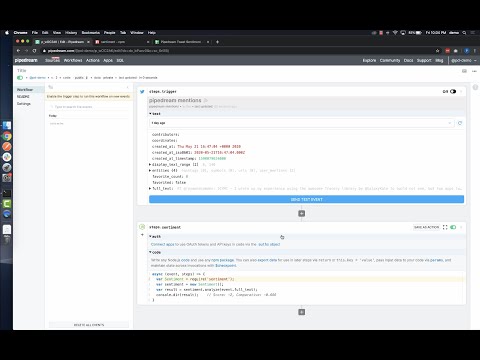What do you want to automate
with TimeCamp and Google Sheets?
Prompt, edit and deploy AI agents that connect to TimeCamp, Google Sheets and 3,000+ other apps in seconds.
Trusted by 1,000,000+ developers from startups to Fortune 500 companies
Popular Ways to Connect TimeCamp with Google Sheets#
Popular TimeCamp and Google Sheets Triggers#
Popular TimeCamp and Google Sheets Actions#
Add a single row of data to Google Sheets. See the documentation
Add multiple rows of data to a Google Sheet. See the documentation
Get all values or values from a range of cells using A1 notation. See the documentation
Overview of TimeCamp#
TimeCamp's API unlocks the potential to automate and integrate time tracking data with a myriad of services and platforms. By leveraging Pipedream's capabilities, you can create custom workflows that respond to events in TimeCamp, such as new time entries, projects, or tasks. These workflows can then trigger actions in other apps, or even process and analyze time tracking data to provide insights and streamline operations.
Connect TimeCamp#
import { axios } from "@pipedream/platform"
export default defineComponent({
props: {
timecamp: {
type: "app",
app: "timecamp",
}
},
async run({steps, $}) {
return await axios($, {
url: `https://www.timecamp.com/third_party/api/me`,
headers: {
"Authorization": `${this.timecamp.$auth.api_token}`,
},
})
},
})
Overview of Google Sheets#
The Google Sheets API allows for the creation, reading, updating, and deletion of data within Google Sheets, enabling a robust platform for spreadsheet management and data manipulation. Through Pipedream, you can craft serverless workflows that respond to various triggers, such as webhook events, emails, or scheduled times, to interact with Google Sheets. This synergy can automate reporting, synchronize data across applications, manage inventory, track leads in a CRM, or even conduct survey analysis by updating and retrieving sheet data on the fly.
Connect Google Sheets#
import { axios } from "@pipedream/platform"
export default defineComponent({
props: {
google_sheets: {
type: "app",
app: "google_sheets",
}
},
async run({steps, $}) {
return await axios($, {
url: `https://www.googleapis.com/oauth2/v1/userinfo`,
headers: {
Authorization: `Bearer ${this.google_sheets.$auth.oauth_access_token}`,
},
})
},
})
Related Videos#



Community Posts#


